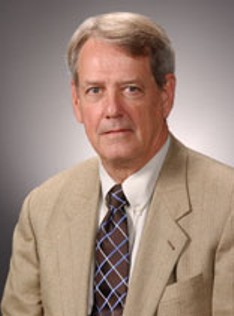 W
WJames Sacra Albus was an American engineer, Senior NIST Fellow and founder and former chief of the Intelligent Systems Division of the Manufacturing Engineering Laboratory at the National Institute of Standards and Technology (NIST).
 W
WRutherford "Gus" Aris was a chemical engineer, control theorist, applied mathematician, and a Regents Professor Emeritus of Chemical Engineering at the University of Minnesota (1958–2005).
 W
WRonald Craig Arkin is an American roboticist and roboethicist, and a Regents' Professor in the School of Interactive Computing, College of Computing at the Georgia Institute of Technology. He is known for the motor schema technique in robot navigation and for his book Behavior-Based Robotics.
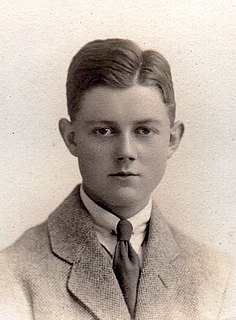 W
WW. Ross Ashby was an English psychiatrist and a pioneer in cybernetics, the study of the science of communications and automatic control systems in both machines and living things. His first name was not used: he was known as Ross Ashby.
 W
WRichard Ernest Bellman was an American applied mathematician, who introduced dynamic programming in 1953, and made important contributions in other fields of mathematics.
 W
WDimitri Panteli Bertsekas is an applied mathematician, electrical engineer, and computer scientist, a McAfee Professor at the Department of Electrical Engineering and Computer Science in School of Engineering at the Massachusetts Institute of Technology (MIT), Cambridge, Massachusetts, and also a Fulton Professor of Computational Decision Making at Arizona State University, Tempe.
 W
WHarold Stephen Black was an American electrical engineer, who revolutionized the field of applied electronics by discovering the negative feedback amplifier in 1927. To some, his discovery is considered the most important breakthrough of the twentieth century in the field of electronics, since it has a wide area of application. This is because all electronic devices are inherently nonlinear, but they can be made substantially linear with the application of negative feedback. Negative feedback works by sacrificing gain for higher linearity. By sacrificing gain, it also has an additional effect of increasing the bandwidth of the amplifier. However, a negative feedback amplifier can be unstable such that it may oscillate. Once the stability problem is solved, the negative feedback amplifier is extremely useful in the field of electronics. Black published a famous paper, Stabilized feedback amplifiers, in 1934.
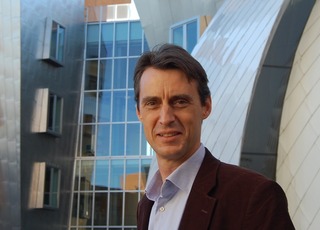 W
WVincent D. Blondel is a Belgian professor of applied mathematics and current rector of the University of Louvain (UCLouvain) and a visiting professor at the Massachusetts Institute of Technology (MIT). Blondel's research lies in the area of mathematical control theory and theoretical computer science. He is mostly known for his contributions in computational complexity in control, multi-agent coordination and complex networks.
 W
WHendrik Wade Bode was an American engineer, researcher, inventor, author and scientist, of Dutch ancestry. As a pioneer of modern control theory and electronic telecommunications he revolutionized both the content and methodology of his chosen fields of research. His synergy with Claude Shannon, the father of information theory, laid the foundations for the technological convergence of the information age.
 W
WNikolay Nikolayevich Bogolyubov, also transliterated as Bogoliubov and Bogolubov, was a Soviet mathematician and theoretical physicist known for a significant contribution to quantum field theory, classical and quantum statistical mechanics, and the theory of dynamical systems; he was the recipient of the 1992 Dirac Prize.
 W
WStephen P. Boyd is an American professor and control theorist. He is the Fortinet Founders Chair in the Department of Electrical Engineering, Samsung Professor of Engineering, and professor by courtesy in Computer Science and Management Science & Engineering at Stanford University. He is also affiliated with Stanford's Institute for Computational and Mathematical Engineering (ICME).
 W
WVladimir Nikolaevich Burkov is a Russian control theorist and the author of more than four hundred publications on control problems, game theory, and combinatorial optimization. Laureate of State Prize of USSR, of Prize of Cabinet Council of USSR, he is an Honoured Scholar of the Russian Federation. Vladimir Burkov is a vice-president of Russian Project Management Association (SOVNET), Member of Russian Academy of Natural Sciences. A professor at Moscow Institute of Physics and Technology and Head of Laboratory at V.A. Trapeznikov Institute of Control Sciences of RAS, in the end of the 1960s he pioneered the theory of active systems.
 W
WBoris Yevseyevich Chertok was a Russian electrical engineer and the control systems designer in the Soviet Union's space program, and later found employment in the Russian Roscosmos in Russia.
 W
WNathan Cohn was an American electrical engineer best known for his work in the development of automatic control techniques for interconnected electric power systems. He worked for the Leeds & Northrup Company for 48 years.
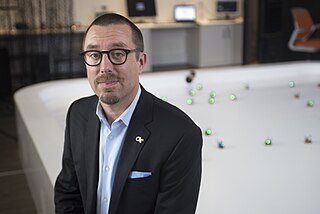 W
WMagnus B. Egerstedt is a Swedish-American roboticist, the Steve C. Chaddick School Chair and Professor at the School of Electrical and Computer Engineering, Georgia Institute of Technology.
 W
WWalter Richard Evans was a noted American control theorist and the inventor of the root locus method in 1948. He was the recipient of the 1987 American Society of Mechanical Engineers Rufus Oldenburger Medal and the 1988 AACC's Richard E. Bellman Control Heritage Award.
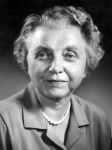 W
WIrmgard Flügge-Lotz, née Lotz was a German-American mathematician, aerospace engineer, and control theorist. She was a pioneer in the development of the theory of discontinuous automatic control, which has found wide application in hysteresis control systems; such applications include guidance systems, electronics, fire-control systems, and temperature regulation. She became the first female engineering professor at Stanford University in 1961 and the first female engineer elected a Fellow of the American Institute of Aeronautics and Astronautics.
 W
WGene F. Franklin was an American electrical engineer and control theorist known for his pioneering work towards the advancement of the control systems engineering – a subfield of electrical engineering. Most of his work on control theory was adapted immediately into NASA's U.S. space program, most famously in the control systems for the Apollo missions to the moon in 1960s–70s.
 W
WEmilia Fridman is an Israeli professor of Electrical Engineering in the Engineering Faculty at Tel Aviv University, specializing in control theory, time-delay and distributed parameter systems. She is an IEEE fellow for “contributions to time-delay systems and sampled-data control”.
 W
WWassim Michael Haddad is a Lebanese-Greek-American applied mathematician, scientist, and engineer, with research specialization in the areas of dynamical systems and control. His research has led to fundamental breakthroughs in applied mathematics, thermodynamics, stability theory, robust control, dynamical system theory, and neuroscience. Professor Haddad is a member of the faculty of the School of Aerospace Engineering at Georgia Institute of Technology, where he holds the rank of Professor and Chair of the Flight Mechanics and Control Discipline. Dr. Haddad is a member of the Academy of Nonlinear Sciences for recognition of paramount contributions to the fields of nonlinear stability theory, nonlinear dynamical systems, and nonlinear control and an IEEE Fellow for contributions to robust, nonlinear, and hybrid control systems.
 W
WYu-Chi "Larry" Ho is a Chinese-American mathematician, control theorist, and a professor at the School of Engineering and Applied Sciences, Harvard University.
 W
WNaira Hovakimyan is an Armenian control theorist who holds the W. Grafton and Lillian B. Wilkins professorship of the Mechanical Science and Engineering at the University of Illinois at Urbana-Champaign. She was the inaugural director of the Intelligent Robotics Laboratory during 2015-2017, associated with the Coordinated Science Laboratory at University of Illinois at Urbana-Champaign.
 W
WAlberto Isidori was born on January 24, 1942 in Rapallo and is an Italian control theorist. He is a Professor of Automatic Control at the University of Rome and an Affiliate Professor of Electrical & Systems Engineering at Washington University in St. Louis. He is well known as the author of the book Nonlinear Control Systems, one of the most highly cited references in nonlinear control.
 W
WRudolf Emil Kálmán was an Hungarian-American electrical engineer, mathematician, and inventor. He is most noted for his co-invention and development of the Kalman filter, a mathematical algorithm that is widely used in signal processing, control systems, and guidance, navigation and control. For this work, U.S. President Barack Obama awarded Kálmán the National Medal of Science on October 7, 2009.
 W
WAndrey Nikolaevich Kolmogorov was a Soviet mathematician who made significant contributions to the mathematics of probability theory, topology, intuitionistic logic, turbulence, classical mechanics, algorithmic information theory and computational complexity.
 W
WArthur James Krener is a Distinguished Visiting Professor in the Department of Applied Mathematics at the Naval Postgraduate School. He has made contributions in the areas of control theory, nonlinear control, and stochastic processes.
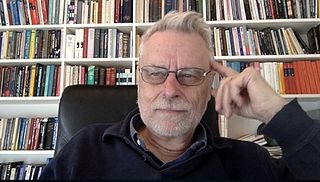 W
WAnders Gunnar Lindquist is a Swedish applied mathematician and control theorist. He has made contributions to the theory of partial realization, stochastic modeling, estimation and control, and moment problems in systems and control. In particular, he is known for the discovery of the fast filtering algorithms for (discrete-time) Kalman filtering in the early 1970s, and his seminal work on the Separation Principle of Stochastic Optimal Control and, in collaborations with Giorgio Picci, the Geometric Theory for Stochastic Realization. Together with late Christopher I. Byrnes and Tryphon T. Georgiou, he is one of the founder of the so-called Byrnes-Georgiou-Lindquist school. They pioneered a new moment-based approach for the solution of control and estimation problems with complexity constraints.
 W
WAleksandr Mikhailovich Lyapunov was a Russian mathematician, mechanician and physicist. His surname is variously romanized as Ljapunov, Liapunov, Liapounoff or Ljapunow. He was the son of astronomer Mikhail Lyapunov and the brother of pianist and composer Sergei Lyapunov.
 W
WEbrahim (Abe) H. Mamdani was a mathematician, computer scientist, electrical engineer and artificial intelligence researcher. He worked at the Imperial College London.
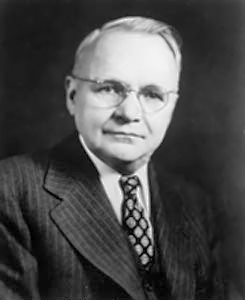 W
WHarry Nyquist was a Swedish electronic engineer who made important contributions to communication theory.
 W
WLev Semyonovich Pontryagin was a Soviet mathematician. He was born in Moscow and lost his eyesight due to a primus stove explosion when he was 14. Despite his blindness he was able to become one of the greatest mathematicians of the 20th century, partially with the help of his mother Tatyana Andreevna who read mathematical books and papers to him. He made major discoveries in a number of fields of mathematics, including algebraic topology and differential topology.
John Ralph Ragazzini was an American electrical engineer and a professor of Electrical Engineering.
 W
WWillis Harmon Ray is an American chemical engineer, control theorist, applied mathematician, and a Vilas Research emeritus professor at the University of Wisconsin–Madison notable for being the 2000 winner of the prestigious Richard E. Bellman Control Heritage Award and the 2019 winner of the Neal Amundson Award.
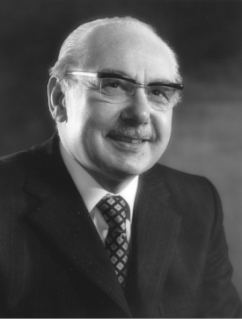 W
WHoward Harry Rosenbrock was a leading figure in control theory and control engineering. He was born in Ilford, England in 1920, graduated in 1941 from University College London with a 1st class honors degree in Electrical Engineering. He served in the Royal Air Force during World War II. He received the PhD from London University in 1955. After some time spent at Cambridge University and MIT, he was awarded a Chair at the University of Manchester Institute of Science and Technology, where he founded the Control Systems Centre. He died on 21 October 2010.
 W
WEdward John Routh, was an English mathematician, noted as the outstanding coach of students preparing for the Mathematical Tripos examination of the University of Cambridge in its heyday in the middle of the nineteenth century. He also did much to systematise the mathematical theory of mechanics and created several ideas critical to the development of modern control systems theory.
 W
WAntonio Ruberti was an Italian politician and engineer. He was a member of the Italian Government and a European Commissioner as well as a Professor of engineering at La Sapienza University.
 W
WS. Shankar Sastry is a former Dean of Engineering at University of California, Berkeley. He is currently a professor of Electrical Engineering and Computer Science, a professor of Bioengineering, and faculty director of the Blum Center for Developing Economies at UC Berkeley. From 2004 to 2007 he was the Director of CITRIS an interdisciplinary center spanning UC Berkeley, Davis, Merced and Santa Cruz. He has served as Chairman, Department of Electrical Engineering and Computer Sciences, University of California, Berkeley from January, 2001 through June 2004. From 1999-early 2001, he was on leave from Berkeley as Director of the Information Technology Office at the Defense Advanced Research Projects Agency (DARPA). From 1996-1999, he was the Director of the Electronics Research Laboratory at Berkeley.
 W
WClaude Elwood Shannon was an American mathematician, electrical engineer, and cryptographer known as "the father of information theory". Shannon is noted for having founded information theory with a landmark paper, "A Mathematical Theory of Communication", which he published in 1948.
 W
WEduardo Daniel Sontag is an American mathematician, and Distinguished University Professor at Northeastern University, who works in the fields control theory, dynamical systems, systems molecular biology, cancer and immunology, theoretical computer science, neural networks, and computational biology.
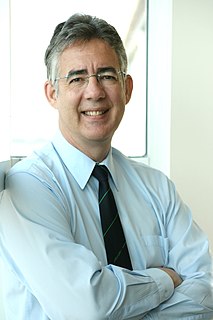 W
WMark W. Spong is an American roboticist. He is a Professor of Systems Engineering and Electrical and Computer Engineering in the Erik Jonsson School of Engineering & Computer Science at the University of Texas at Dallas (UTD). He served as Dean of the Jonsson School and the Lars Magnus Ericsson Chair in Electrical Engineering from 2008-2017. Before he joined UTD, he was the Donald Biggar Willett Professor of Engineering, Professor of Electrical Engineering, Research Professor of Coordinated Science Laboratory and Information Trust Institute, and Director of Center for Autonomous Engineering Systems and Robotics at the University of Illinois at Urbana-Champaign.
 W
WSivaguru S. Sritharan is an American aerodynamicist and mathematician.
 W
WPeter (Petre) Stoica is a researcher and educator in the field of signal processing and its applications to radar/sonar, communications and bio-medicine. He is a professor of Signals and Systems Modeling at Uppsala University in Sweden, and a Member of the Royal Swedish Academy of Engineering Sciences, the United States National Academy of Engineering (Foreign Member), the Romanian Academy, the European Academy of Sciences, and the Royal Society of Sciences. He is also a Fellow of IEEE, EURASIP, IETI, and the Royal Statistical Society.
 W
WJakob Stoustrup is a Danish researcher employed at Aalborg University, where he serves as professor of control theory and as Vice Dean of Education at the Technical Faculty of IT and Design. Furthermore, he is in charge of coordinating and representing the university’s activities within the field of energy research and innovation in cooperation with John K. Pedersen, Vice Dean for research and innovation at the Faculty of Engineering and Science.
 W
WJames Joseph Truchard is an American billionaire, electrical engineer, and a businessman who is the co-founder and former president and CEO of National Instruments, a company producing automated test equipment and virtual instrumentation software. Truchard is a member of the National Academy of Engineering and the Royal Swedish Academy of Engineering Sciences.
 W
WPaul Tseng was a Chinese-American and Canadian applied mathematician and a professor at the Department of Mathematics at the University of Washington, in Seattle, Washington. Tseng was recognized by his peers to be one of the leading optimization researchers of his generation. On August 13, 2009, Paul Tseng went missing while kayaking in the Yangtze River in the Yunnan province of China and is presumed dead.
 W
WMathukumalli Vidyasagar FRS is a leading control theorist and a Fellow of Royal Society. He is currently a Distinguished Professor in Electrical Engineering at IIT Hyderabad. Previously he was the Cecil & Ida Green (II) Chair of Systems Biology Science at the University of Texas at Dallas. Prior to that he was an executive vice-president at Tata Consultancy Services (TCS) where he headed the Advanced Technology Center. Earlier, he was the director of Centre for Artificial Intelligence and Robotics (CAIR), a DRDO defence lab in Bangalore. He is the son of eminent mathematician M V Subbarao.
 W
WKevin Warwick FIET, FCGI, is a British engineer and Deputy Vice-Chancellor (Research) at Coventry University in the United Kingdom. He is known for his studies on direct interfaces between computer systems and the human nervous system, and has also done research concerning robotics.
 W
WNorbert Wiener was an American mathematician and philosopher. He was a professor of mathematics at the Massachusetts Institute of Technology (MIT). A child prodigy, Wiener later became an early researcher in stochastic and mathematical noise processes, contributing work relevant to electronic engineering, electronic communication, and control systems.
 W
WWalter Murray Wonham is a Canadian control theorist and professor at the University of Toronto. He dealt with multi-variable geometric control theory, stochastic control and stochastic filters, and more recently the control of discrete event systems from the standpoint of mathematical logic and formal languages.
 W
WLotfi Aliasker Zadeh was a mathematician, computer scientist, electrical engineer, artificial intelligence researcher and professor emeritus of computer science at the University of California, Berkeley.
 W
WGeorge Zames was a Polish-Canadian control theorist and professor at McGill University, Montreal, Quebec, Canada. Zames is known for his fundamental contributions to the theory of robust control, and was credited for the development of various well-known results such as small-gain theorem, passivity theorem, circle criterion in input–output form, and most famously, H-infinity methods.